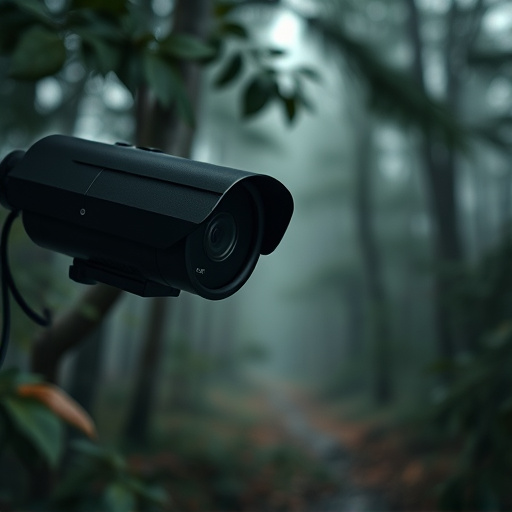Small hidden cameras in bedrooms pose significant privacy threats, but smartphone apps using infrared, visual analysis, and motion detection offer effective solutions. These apps empower individuals to safeguard their personal spaces, enhancing security through advanced features like heat signatures and live video feedback. Understanding light interactions and monitoring electrical activity are additional methods for detecting these cameras, promoting a balance between safety and privacy in the digital era.
Uncover the hidden threat of small, clandestine cameras in your own bedroom with our comprehensive guide. In an era where privacy is paramount, understanding how to detect these covert devices is essential for personal safety. This article explores a range of smartphone-based methods, from apps that analyze visual cues like light and shadow to tools that monitor unusual electrical activity. We also delve into the ethical landscape surrounding privacy versus security.
- Understanding Small Hidden Cameras in Bedrooms
- Common Smartphone Apps for Detection
- Using Light and Shadow to Spot Cameras
- Analyzing Unusual Electrical Activity
- Ethical Considerations: Privacy vs. Safety
Understanding Small Hidden Cameras in Bedrooms
Small hidden cameras in bedrooms have become a growing concern due to their minute size and ease of installation. These tiny devices can be easily concealed within everyday items like picture frames, clock radios, or even plants, making them nearly undetectable to the naked eye. While they initially sparked concern among privacy advocates, smartphone technology has equipped individuals with powerful tools to detect such devices.
Using specialized apps that employ infrared or visual analysis, users can scan their spaces for any signs of hidden cameras. Smartphone-based methods offer a discreet and non-invasive approach to identifying potential privacy breaches. By empowering individuals to take control of their personal spaces, these techniques contribute to enhancing overall security and peace of mind, especially in sensitive areas like bedrooms where privacy is paramount.
Common Smartphone Apps for Detection
There are numerous smartphone apps designed to help users detect hidden cameras, especially those targeting home security and privacy concerns. These applications leverage various technologies like infrared sensors, motion detection, and image analysis algorithms to identify potential surveillance devices. Many of these apps are particularly effective in uncovering small hidden cameras for bedroom settings, ensuring a safe and private space.
Popular options include camera detector apps that scan rooms for unusual heat signatures or visual anomalies indicative of covert recording equipment. Some advanced apps even provide live video feedback, allowing users to remotely monitor their surroundings. With the increasing prevalence of remote work and online interactions, these tools have become essential in safeguarding personal spaces and preventing unauthorized surveillance, especially when it comes to sensitive areas like bedrooms.
Using Light and Shadow to Spot Cameras
Hidden cameras, especially small ones designed for bedrooms, often exploit light and shadow to capture footage discreetly. By understanding how light interacts with objects, you can spot these devices. Pay close attention to any unusual shadows or bright spots that might indicate the presence of a lens. Shadows cast by furniture or objects in a room can be manipulated by the camera’s position, creating distinct patterns that don’t align with natural lighting conditions.
Additionally, areas with sudden changes in light intensity—like direct sunlight entering through a window and hitting a wall or surface—can be red flags. These contrasting lights might reveal small hidden cameras trying to blend into the environment. By moving around the room and observing these light interactions, you can uncover potential surveillance devices, ensuring your privacy is protected from small hidden cameras for bedroom spaces.
Analyzing Unusual Electrical Activity
One effective method to detect hidden cameras using a smartphone is by analyzing unusual electrical activity. Small hidden cameras, especially those designed for bedrooms or personal spaces, often require minimal power, making their electrical signatures hard to detect with traditional means. However, smartphones equipped with sensitive sensors can pick up on subtle fluctuations in power consumption that might indicate the presence of such devices. By running diagnostic apps that monitor device activity, users can look for unexpected peaks or patterns suggesting hidden cameras are actively recording.
These apps can help identify if there’s an unknown device drawing power in the background, potentially pointing to a hidden camera. While this method isn’t foolproof, it offers a readily available and low-cost tool for individuals concerned about privacy, especially when combined with other detection techniques like visual inspections and electromagnetic field scanners.
Ethical Considerations: Privacy vs. Safety
When using smartphones to detect hidden cameras, especially in sensitive areas like bedrooms, it’s crucial to balance privacy and safety. While detecting small hidden cameras can be a legitimate concern for personal security, it raises ethical questions regarding individual privacy rights. It’s important to use these methods responsibly, ensuring that any surveillance is conducted with the consent of all parties involved, especially within private spaces.
In today’s digital era, where technology offers both protection and potential invasion, navigating this balance becomes increasingly complex. Users must be mindful of the legal and ethical implications, especially when employing smartphone applications designed to uncover hidden cameras. This is particularly relevant for small hidden cameras in bedrooms, which may raise concerns among residents about their privacy being intruded upon without their knowledge or consent.
Detecting small hidden cameras in bedrooms has become a pressing concern, prompting individuals to explore innovative solutions using their smartphones. This article has delved into effective methods, from smartphone apps that analyze visual patterns and electromagnetic signals to utilizing light and shadow. While these techniques empower users to safeguard privacy, it’s crucial to balance safety measures with respect for personal privacy. Understanding the technology behind small hidden cameras and adopting proactive precautions can help create a safer digital environment.
